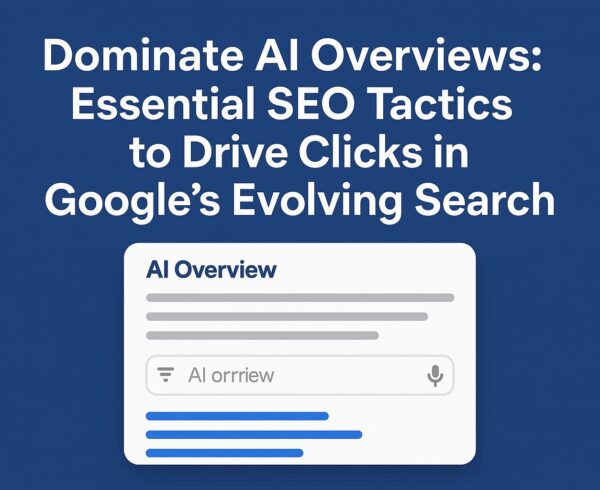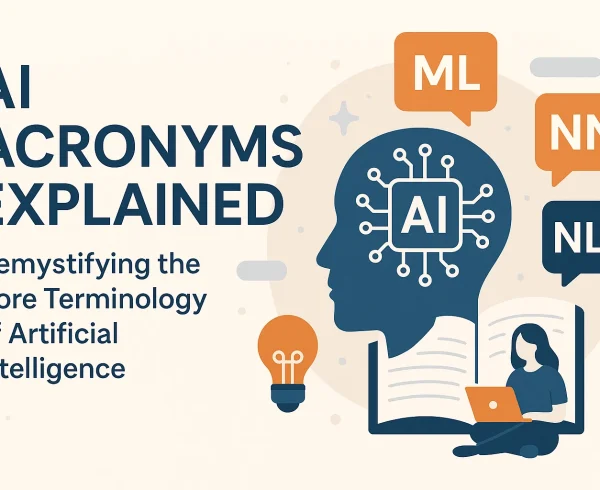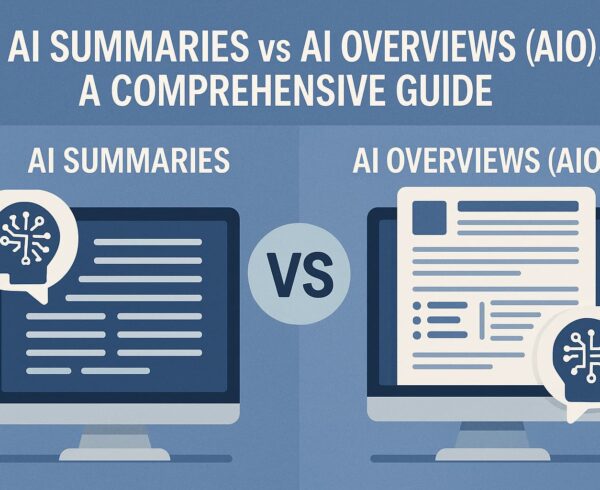Dive into a guide that unveils the diversity of AI prompts, from sparking creativity to fostering deep analysis. Learn to craft prompts that leverage AI’s vast capabilities for innovative, informed, and engaging responses.
Do you ever stare at a blank page, struggling for inspiration? Whether you’re a writer, artist, programmer, or simply someone looking for creative sparks, the answer lies in the power of prompts. These versatile tools can act as catalysts, igniting your imagination and guiding your creation in diverse directions.
This guide delves into the world of prompts, exploring various types and their unique applications. You’ll learn how to craft Ai prompts that spark different creative processes, from generating captivating stories to writing compelling emails or composing evocative poems. We’ll equip you with the knowledge and skills to unlock your full potential, allowing you to write better, create more, and explore the boundless possibilities of your imagination.
To create a comprehensive guide to the different types of AI prompts, we’ll expand on the categories you’ve listed and provide clear objectives for each type, along with three examples. This will ensure a broad understanding of interacting with AI in various contexts, leveraging its capabilities to the fullest.
1. Creative Prompts
Unleash your inner artist! These prompts spark imaginative content across various formats. The possibilities are endless, from crafting a poem about a robot’s dreams to generating a script for a sci-fi film. You can request a catchy marketing jingle, a captivating short story, or even the lyrics for a new song. Let your creativity flow!
Objective: Encourage AI to generate original, engaging content such as stories, poems, art descriptions, or creative texts. These are used to develop engaging and creative content, such as poems, code, scripts, musical pieces, emails, letters, etc.
- Example 1: “Write a poem about a journey through the mountains during spring.”
- Example 2: “Create a short story where the main character discovers a hidden world beneath their city.”
- Example 3: “Describe a painting that features a futuristic city merging with nature.”
2. Informational Prompts
Dive into the data ocean! These prompts help you extract valuable insights from large datasets. Imagine asking the AI to analyze customer reviews and identify key trends or summarize financial data to understand your company’s health. They act as powerful research assistants, sifting through vast amounts of information and delivering concise summaries.
Objective: Extract detailed and specific information from the AI to inform decision-making or increase knowledge on a subject. These are used to extract details from big data to inform decision-making.
- Example 1: “What are the key differences between quantum computing and classical computing?”
- Example 2: “Provide a summary of the latest research findings on renewable energy sources.”
- Example 3: “Explain the economic impacts of the COVID-19 pandemic.”
3. Reasoning Prompts
Put your logic to the test! These prompts challenge the AI to solve problems or logically answer questions. You could present a complex medical diagnosis scenario, ask the AI to suggest potential solutions or pose a philosophical dilemma and spark debate by asking for different perspectives.
Objective: Utilize AI’s ability to apply logic and reasoning to solve problems or answer complex questions. These are used to solve problems or logically answer questions.
- Example 1: “How can we reduce the environmental impact of urban transportation?”
- Example 2: “Assess the pros and cons of implementing a universal basic income.”
- Example 3: “What strategies could a small business use to improve its online visibility?”
4. Listicle Prompts
Make your “Top 10” dreams a reality! These prompts generate ordered lists tailored to your needs. Need inspiration for your next blog post? Ask for “10 engaging topics for your travel blog” or “5 best tips for improving your website’s user experience.” These prompts are perfect for creating quick, informative, and engaging content.
Objective: Generate structured lists of tips, ideas, or items related to a specific topic or interest. These are used to generate lists of items, such as “Top 10 tips for improving your writing.”
- Example 1: “List the top 10 tips for improving your writing skills.”
- Example 2: “What are the five most important factors to consider when buying a new laptop?”
- Example 3: “Provide seven creative dinner ideas for a vegetarian diet.”
5. Instructional Prompts
Master any task! These prompts offer step-by-step guidance on how to complete a specific activity. Stuck on a complex DIY project? Ask the AI for “detailed instructions on building a birdhouse” or “5 key steps to creating a successful marketing campaign.” These prompts act as virtual mentors, empowering you to tackle new challenges with confidence
Objective: Offer step-by-step guidance or instructions on how to perform a task or achieve a goal. These are used to provide instructions or guidance on how to complete a task.
- Example 1: “How do you bake a chocolate cake from scratch?”
- Example 2: “Explain the process of changing a car tyre.”
- Example 3: “Guide me through the basics of meditation.”
6. Open-Ended Prompts
Explore the unknown! These prompts encourage free thinking and creative exploration. You could ask the AI to “imagine a world where animals can talk” or “write a story from the perspective of a single raindrop.” These prompts pave the way for boundless creativity and unexpected results.
Objective: Encourage broad, reflective, or speculative responses, allowing for creative exploration or detailed discussion. These prompts are designed to encourage creative exploration and free thinking.
- Example 1: “What could the future of space travel look like?”
- Example 2: “Discuss the potential impacts of artificial intelligence on art creation.”
- Example 3: “Imagine a world where water is more valuable than gold. Describe it.”
7. Closed-Ended Prompts
Seek specific answers! These prompts guide the AI towards a predetermined response. Examples include “What is the capital of France?” or “What is the current temperature in London?” They are valuable for fact-checking, verifying information, and testing the AI’s knowledge base.
Objective: Elicit a specific, concise answer, often factual or based on predefined options. These prompts have a specific answer in mind and are designed to elicit a specific response.
- Example 1: “Is Paris the capital of France?”
- Example 2: “Do penguins live in the Arctic?”
- Example 3: “Can humans breathe on Mars without assistance?”
8. One-Shot Prompts
Keep it simple, keep it effective! These prompts are single, self-contained instructions without requiring further information. Examples include “Write a haiku about love” or “Translate this sentence into Spanish.” They are ideal for quick tasks and straightforward requests.
Objective: Provide all necessary information in a single prompt, requiring the AI to respond based on that alone. These are single, standalone prompts that require the AI to respond or take action based on that single input alone.
- Example 1: “Translate ‘Hello, how are you?’ into Spanish.”
- Example 2: “Calculate the area of a circle with a radius of 4 cm.”
- Example 3: “Summarize the plot of ‘The Great Gatsby’ in one paragraph.”
9. Multimodal Prompts
Break the mold! These prompts combine different elements like text, voice, images, and even video to create more engaging and interactive experiences. Imagine showing the AI a picture of a historical monument and asking it to “generate a poem inspired by this image” or “describe the architectural style in detail.” These prompts push the boundaries of AI interaction and unlock new possibilities.
Objective: Combine multiple types of inputs (text, images, voice) to create a rich, interactive AI experience. These prompts combine text, voice, images, and possibly other sensory inputs, leading to richer and more interactive AI experiences.
- Example 1: “Given this photo of a meal, list the possible ingredients.”
- Example 2: “Convert the following voice memo into a written transcript.”
- Example 3: “Analyze the sentiment of this customer review video.”
10. Analytical Prompts
Objective: Engage AI in analyzing data, patterns, or concepts to derive insights or conclusions.
- Example 1: “Evaluate the trend in global temperatures over the past 50 years.”
- Example 2: “Analyze the main themes in William Shakespeare’s ‘Macbeth’.”
- Example 3: “Compare the economic growth rates of Country A and Country B over the last decade.”
11. Interactive Prompts
Objective: Establish a back-and-forth dialogue between the user and AI, promoting an engaging and dynamic exchange of information.
- Example 1: “User: What’s the weather like in Paris today? AI: [Response]. User: Should I bring an umbrella?”
- Example 2: “User: Recommend a book for me. AI: [Response]. User: Can you tell me more about it?”
- Example 3: “User: I need help with my math homework. AI: [Response]. User: I don’t understand this step.”
12. Comparative Prompts
Objective: Encourage AI to compare and contrast two or more items, ideas, concepts, or scenarios, highlighting differences, similarities, and unique features.
- Example 1: “Compare the benefits of aerobic vs. anaerobic exercise.”
- Example 2: “Contrast the political systems of the United States and Sweden.”
- Example 3: “Discuss the differences and similarities between classical and modern art.”
13. Predictive Prompts
Objective: Ask AI to forecast or predict outcomes based on current data, trends, or patterns, considering various factors and possibilities.
- Example 1: “Predict the future of electric vehicles in the next decade.”
- Example 2: “What are the potential developments in AI technology by 2030?”
- Example 3: “Forecast the next big trend in social media platforms.”
14. Reflective Prompts
Objective: Promote introspection or reflection on personal experiences, opinions, or feelings, often used in therapeutic or self-improvement contexts.
- Example 1: “Reflect on a moment that significantly changed your perspective on life.”
- Example 2: “Consider the impact of daily meditation on your mental health.”
- Example 3: “Evaluate the role of technology in your daily life and its effects.”
15. Scenario-Based Prompts
Objective: Present hypothetical situations or scenarios to stimulate critical thinking, problem-solving, or exploration of specific themes and ideas.
- Example 1: “Imagine you’re the CEO of a tech startup. How would you navigate a market downturn?”
- Example 2: “Describe how you would survive if stranded on a deserted island with limited resources.”
- Example 3: “Outline a plan to address a global water scarcity crisis.”
16. Explanatory Prompts
Objective: Solicit detailed explanations or clarifications on topics, mechanisms, theories, or phenomena to deepen understanding or knowledge.
- Example 1: “Explain the process of photosynthesis in detail.”
- Example 2: “Describe how blockchain technology works and its applications.”
- Example 3: “Clarify the concept of relativity as proposed by Albert Einstein.”
17. Inspirational Prompts
Objective: Motivate or inspire creativity, action, or thought through uplifting, encouraging, or thought-provoking statements or questions.
- Example 1: “Share a story that highlights the power of resilience in overcoming challenges.”
- Example 2: “What are some innovative ways to tackle climate change that haven’t been widely considered?”
- Example 3: “Provide quotes that inspire personal growth and explain their significance.”
18. Diagnostic Prompts
Objective: Employ AI to analyze or diagnose problems, errors, or issues within a given dataset, text, code, or scenario, offering solutions or insights.
- Example 1: “Diagnose the common errors in this block of Python code.”
- Example 2: “Identify the weaknesses in this business plan and suggest improvements.”
- Example 3: “Analyze this paragraph for grammatical errors and suggest corrections.”
19. Philosophical Prompts
Objective: Engage in deep, philosophical questions or debates about life, existence, ethics, or morality, encouraging thoughtful discourse.
- Example 1: “Discuss the ethical implications of artificial intelligence in decision-making.”
- Example 2: “What is the meaning of happiness, and how can it be achieved?”
- Example 3: “Explore the concept of free will versus determinism.”
20. Customization Prompts
Objective: Tailor responses or content based on specific user preferences, interests, or requirements, offering personalized experiences or recommendations.
- Example 1: “Suggest a workout plan based on my goal to run a marathon.”
- Example 2: “Recommend books tailored to my interest in historical fiction.”
- Example 3: “Create a travel itinerary for a culturally immersive experience in Japan.”
21. Evaluation Prompts
Objective: Prompt AI to assess or critique artworks, writings, projects, or performances, providing constructive feedback or insights based on certain criteria or standards.
- Example 1: “Critique this short story focusing on character development and narrative flow.”
- Example 2: “Evaluate the usability and design of this website from a user experience perspective.”
- Example 3: “Assess the effectiveness of this advertising campaign in terms of consumer engagement.”
22. Hypothetical Question Prompts
Objective: Pose hypothetical questions to explore possibilities, ethical dilemmas, or theoretical scenarios, encouraging creative and critical thinking.
- Example 1: “If you could solve one world problem with technology, what would it be and why?”
- Example 2: “How would society change if teleportation became possible?”
- Example 3: “What ethical considerations arise with the use of genetic editing technologies?”
23. Personalization Prompts
Objective: Generate responses or content tailored to the individual’s preferences, history, or input, enhancing user experience through customization.
- Example 1: “Based on my reading history, what book should I read next?”
- Example 2: “Suggest a weekend itinerary for someone who loves nature and photography.”
- Example 3: “Create a personalized learning plan to improve my coding skills in Python.”
24. Process Explanation Prompts
Objective: Explain complex processes, methodologies, or systems in a simplified manner, making them accessible and understandable to non-experts.
- Example 1: “Explain how a smartphone works to a 10-year-old.”
- Example 2: “Describe the process of electing a president in simple terms.”
- Example 3: “Simplify the concept of the stock market and how it operates.”
25. Goal-Oriented Prompts
Objective: Guide AI to produce outputs that align with specific goals, objectives, or outcomes, focusing on achieving targeted results.
- Example 1: “Provide strategies to increase website traffic organically.”
- Example 2: “Suggest methods to improve memory retention for studying.”
- Example 3: “Outline steps to start a successful online business in the wellness industry.”
26. Emotion-Based Prompts
Objective: Elicit responses that convey or recognize emotional states, aiming to connect on a more personal level or enhance storytelling and empathy.
- Example 1: “Write a story that evokes a feeling of nostalgia.”
- Example 2: “Identify the emotions portrayed in this piece of music.”
- Example 3: “How would you comfort someone who is going through a tough time?”
27. Trend Analysis Prompts
Objective: Analyze current trends in various fields such as fashion, technology, finance, or social media to predict future directions and innovations.
- Example 1: “What are the emerging trends in sustainable fashion?”
- Example 2: “Analyze the latest trends in consumer technology for the upcoming year.”
- Example 3: “Predict the next big investment opportunities based on current market trends.”
28. Creative Challenge Prompts
Objective: Challenge AI to come up with innovative solutions, creative ideas, or unique approaches to problems, encouraging out-of-the-box thinking.
- Example 1: “Design a concept for a zero-waste city of the future.”
- Example 2: “Invent a new sport that can be played both on Earth and in zero gravity.”
- Example 3: “Propose a novel way to recycle plastic that is currently considered non-recyclable.”
29. Role-Playing Prompts
Objective: Engage AI in adopting a specific character or role, facilitating interactive stories, educational scenarios, or entertainment experiences.
- Example 1: “Pretend you’re a detective solving a mystery in 19th-century London.”
- Example 2: “Act as a tour guide for a historical site, providing information and stories.”
- Example 3: “Imagine you’re a time traveler from the future. Describe the world you come from.”
30. Socratic Questioning Prompts
Objective: Utilize a form of disciplined questioning to explore complex ideas, uncover underlying assumptions, or challenge thoughts and beliefs.
- Example 1: “Why do we value art?”
- Example 2: “What defines ‘justice’ in society?”
- Example 3: “How do we know what is true in a world full of misinformation?”
31. Contextual Understanding Prompts
Objective: Encourage AI to infer or use context from previous interactions, data, or provided information to generate relevant and nuanced responses.
- Example 1: “Given my interest in historical fiction and mystery novels, recommend a book that combines both elements.”
- Example 2: “Considering the recent trends in global economics, what would be a safe investment strategy?”
- Example 3: “Based on my current fitness level and goals, customize a workout plan that suits me.”
32. Futurecasting Prompts
Objective: Prompt AI to project current data and trends into the future, offering speculative insights, predictions, or scenarios in various fields.
- Example 1: “What will the impact of climate change be on coastal cities by 2050?”
- Example 2: “Forecast the evolution of workplace dynamics with the advancement of remote work technology.”
- Example 3: “Predict how personal privacy will change with the growth of surveillance technologies.”
33. Ethical Dilemma Prompts
Objective: Engage AI in discussions about ethical dilemmas, prompting considerations of morality, ethics, and the complex nature of decision-making.
- Example 1: “Should autonomous vehicles prioritize the safety of passengers over pedestrians in an unavoidable accident?”
- Example 2: “Is it ethical to use AI for surveillance purposes in public spaces?”
- Example 3: “Discuss the ethical implications of editing human embryos using CRISPR technology.”
34. Concept Development Prompts
Objective: Utilize AI’s creativity and knowledge base to develop new concepts, ideas, or products that address specific problems or market gaps.
- Example 1: “Design a sustainable packaging solution that reduces waste and is cost-effective.”
- Example 2: “Develop a concept for an app that helps people manage their mental health daily.”
- Example 3: “Invent a new form of renewable energy that could be implemented in urban environments.”
35. Cross-Disciplinary Prompts
Objective: Merge ideas, theories, or data from different disciplines to foster innovation, solve complex problems, or explore new perspectives.
- Example 1: “How can principles of psychology improve user experience design in software development?”
- Example 2: “Apply concepts from ecology to develop more efficient urban planning models.”
- Example 3: “Use theories from behavioural economics to create strategies for increasing public engagement in recycling programs.”
36. Interactive Tutorial Prompts
Objective: Guide users through interactive, step-by-step tutorials on a wide range of topics, providing a hands-on learning experience.
- Example 1: “Walk me through the basics of learning to play the guitar.”
- Example 2: “Provide a step-by-step guide to creating your first machine learning model.”
- Example 3: “Teach me how to prepare a traditional dish from Japanese cuisine.”
37. Memory Recall Prompts
Objective: Enable AI to recall and utilize information from previous interactions within a session to create a more coherent and personalized dialogue.
- Example 1: “Referencing our earlier conversation about Italian Renaissance art, recommend a related book.”
- Example 2: “Considering my feedback on the draft, how would you revise the project proposal?”
- Example 3: “Based on my preferences for mild climates and cultural history, suggest a travel destination.”
38. Creative Writing Challenge Prompts
Objective: Challenge users or AI to engage in creative writing exercises that push the boundaries of imagination, style, and content.
- Example 1: “Write a story where the main character can communicate with animals.”
- Example 2: “Compose a poem from the perspective of a tree across different seasons.”
- Example 3: “Create a dialogue between historical figures from different eras if they met in a time travel cafe.”
39. Language Learning Prompts
Objective: Facilitate language learning through conversational practice, grammar exercises, and vocabulary expansion in a targeted language.
- Example 1: “Provide a conversation exercise for practising French restaurant vocabulary.”
- Example 2: “Correct the following Spanish sentences for grammar and provide explanations.”
- Example 3: “Teach me idiomatic expressions in Japanese that are commonly used in daily conversation.”
40. Mindfulness and Wellness Prompts
Objective: Offer prompts encouraging mindfulness, personal well-being, and mental health practices, guiding users through reflective or calming exercises.
- Example 1: “Guide me through a five-minute mindfulness breathing exercise.”
- Example 2: “Provide daily affirmations for promoting self-confidence and positive thinking.”
- Example 3: “Suggest techniques for managing stress during work deadlines.”
41. Role-Based Prompts
Objective: Role-based prompts are designed to engage AI in a scenario where it assumes a specific role or identity, such as a mentor, coach, consultant, character from a story, or any other designated persona. These prompts elicit responses consistent with the assigned role, enhancing the interaction’s relevance, depth, and personalization. The objective is to create a more immersive and engaging experience for the user, leveraging the AI’s ability to tailor its responses according to the nuances of the given role.
Examples and Explanation:
- Mentor Role
- Prompt: “As my career mentor, can you advise me on navigating a career change from finance to technology?”
- Explanation: In this scenario, the AI assumes the role of a career mentor, offering guidance and advice tailored to career development. The response would likely include steps to acquire new skills, network within the tech industry, and strategies for transitioning roles effectively.
- Fitness Coach Role
- Prompt: “As my virtual fitness coach, what workout plan would you recommend for someone with a busy schedule?”
- Explanation: Here, the AI adopts the persona of a fitness coach, considering the user’s time constraints to suggest a practical and efficient workout routine. The focus would be on short, high-intensity workouts or flexible exercise regimens that can be easily integrated into a busy lifestyle.
- Historical Figure Role
- Prompt: “As Leonardo da Vinci, what would you say is the key to unlocking creativity and innovation?”
- Explanation: Taking on the role of Leonardo da Vinci, the AI would provide insights or advice on creativity and innovation, channelling the Renaissance artist’s known perspectives and philosophies. This could include the importance of curiosity, learning from nature, and interdisciplinary studies.
Role-Based Prompts Explanation:
Role-based prompts are particularly effective in creating dynamic and engaging conversations that can educate, inspire, or entertain users. By assigning a role to the AI, users can experience a more directed and meaningful interaction as the AI leverages its vast knowledge base to simulate the persona’s likely responses. This approach can be especially useful in educational settings, personal development, or entertainment, offering a unique way to access information, advice, or perspectives through the lens of the designated role. Role-based prompts offer a creative and personalized way to interact with AI, whether for learning new skills, gaining insights into personal challenges, or exploring historical viewpoints.
How we Conclude
These categories expand the toolkit for engaging with AI, allowing for a more nuanced and sophisticated use of the technology across various domains and purposes. By understanding and utilizing these diverse prompt types, users can foster more meaningful interactions, gain deeper insights, and achieve more targeted outcomes with AI.
These prompt types further illustrate the versatility and depth of interactions possible with AI, catering to various interests, needs, and curiosities. Whether for educational purposes, personal growth, creative exploration, or professional development, these prompts showcase the multifaceted capabilities of AI to engage and assist users in novel and meaningful ways.
This guide provides an in-depth exploration of the diverse types of AI prompts, each meticulously crafted to harness the evolving capabilities of generative AI. In the wake of the rise of AI, understanding and utilizing these distinct prompt types allows users to engage more efficiently with AI technologies, enabling them to achieve their objectives with precision and creativity.
1







Leave a Comment